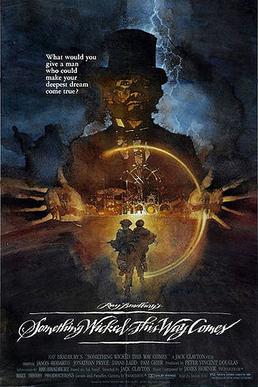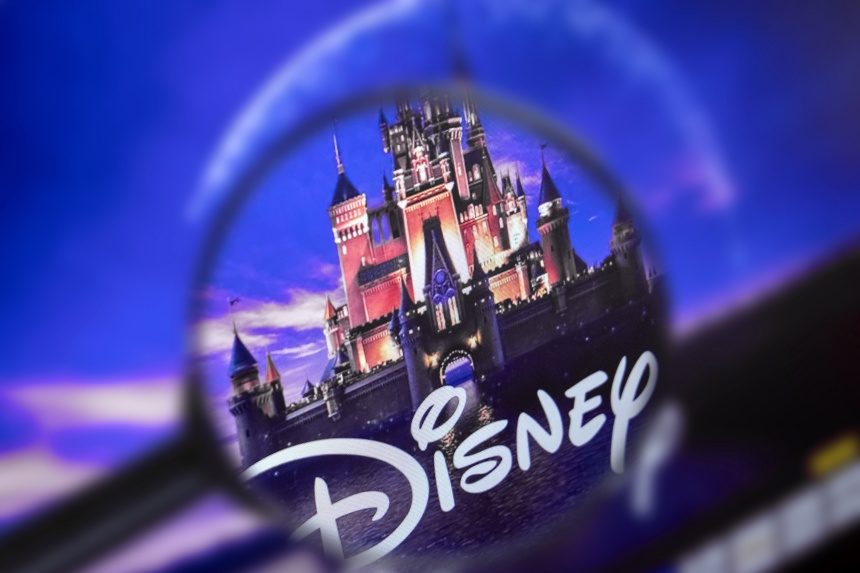Despite how glamorous or easy it might look from the outside, the business of film is a constant challenge. And while a company like Disney might seem like a colossus today, there are a number of times when the future or direction of the studio was in question. Perhaps the strangest period was in the late 1970s and the early 1980s. Wedged between the studio’s dominance on the big and small screens and the Disney Renaissance that began in 1989 (which has essentially never stopped, as the studio went on to acquire Pixar, Lucasfilm, Marvel, and Fox), there’s a decidedly strange period where the Disney brand tried to branch out and appeal to teens and older viewers with a group of movies that are, well, strange. Inspired in part by the post Star Wars sci-fi boom, the re-emerging interest in fantasy, and the growing popularity of young adult horror, Disney released a group of films that drew mixed reviews and had mixed performance at the box office; and yet, some of them have emerged as classics to their original target generation as they’ve grown up. This is the story of when Disney got weird.
It helps if you stop and remember that Disney has had a diverse slate of content past the animated features for decades. With series like The Mickey Mouse Club, Davy Crockett, and Zorro on TV, Disney brought out a variety of different live-action programming. Their live-action films included everything from nature documentaries to comedies to adventure films to light science-fiction entries (like the “Medfield College” movies, which included The Absent-Minded Professor, Son of Flubber, The Computer Wore Tennis Shoes, Now You See Him Now You Don’t, and The Strongest Man in the World, the latter three of which starred Kurt Russell). The common thread was that the movies were directed at a young audience; sure, teens saw them, but in no way were they the target.
In the wake of Walt Disney’s death in 1966, his brother Roy filled the spots of CEO, chairman, and president. Roy’s leadership saw a continuity of style. After presiding over the opening of Walt Disney World in Florida in 1971, Roy died of a stroke that December. Leadership fell to three men who had come up under Walt and Roy: Ron Miller (Walt’s son-in-law); Card Walker; and Donn Tatum. It was Miller who wanted to pursue the teen target, and while some of the projects that he championed would bear big results for talent and ideas down the road, they weren’t always big hits.
At the same time, trouble was brewing in the animation ranks. Clashes between older and younger animators intensified, particularly during the making of The Fox and the Hound, with some talents being openly critical of older animators and the corporate leadership. Animator Don Bluth and a number of other animators left; Bluth formed his own studio to make The Secret of NIMH, and he would go on to work on films like An American Tail, The Land Before Time, and Anastasia. One young animator who had trouble seeing his visions realized was Tim Burton; while Miller found funding for some of his short stop-motion projects like Vincent and Frankenweenie, Burton would be fired, allowing him to follow his own very successful creative impulses. Brad Bird was also fired outright, but would later create classics like The Iron Giant and Pixar gems like The Incredibles and Ratatouille. Yet another employee terminated around that time was John Lasseter, who would be a key figure in the rise of Pixar while directing five of its films. Obviously, it was a time of turmoil. Amid this atmosphere, Disney released the following films between 1979 and 1985.
The Black Hole (1979)
The Disney+ trailer for The Black Hole (Uploaded to YouTube by Disney+)
The massive success of Star Wars in 1977 kicked off a wave of science fiction and fantasy films at competing studios. Universal had Battlestar Galactica, Paramount revived a favorite for Star Trek: The Motion Picture, and other studios (and countries) produced responses like Message from Space, Starcrash, and Battle Beyond the Stars. Disney’s entrant was The Black Hole, which would be the studio’s first PG-rated feature. Strangely enough, the film had been conceived as a cash-in for an earlier wave of films: the disaster boom of the early ’70s. With a rewrite and the inclusion of robots like V.I.N.C.E.N.T. and Old B.O.B., the film seemed closer to Star Wars on the surface. However, the resulting movie was much darker. There are shocking revelations about the “Humanoid” workers, one character is killed in an extremely violent fashion, and articles are still being written about that absolutely crazy hallucinatory trip through the black hole that plays like something out of Dante’s Inferno. To be fair, the production design is great and John Barry’s score is excellent, but this was not the fun one might expect from a Disney film released four days before Christmas. Though it made over its budget and earned Oscar noms for cinematography and best visual effects, its performance was considered disappointing.
The Watcher in the Woods (1980)
The Watcher in the Woods is based on A Watcher in the Woods, a 1976 novel by Florence Engel Randall; were it written today, it would be classified as Young Adult horror. The story follows a lot of Gothic conventions, with a reclusive old lady, a missing girl who looks a lot like the girl who just moved in, and, of course, a forest-filled British setting. The film has great atmosphere, and the legendary Bette Davis is striking as Mrs. Aylwood. However, the film was the victim of constant tinkering and was yanked out of theaters after 10 days so the ending could be reconfigured; this has resulted in multiple endings having been shown or available on different home video platforms. Those changes lend to the film’s reputation as confusing, though it’s really a bit more anti-climactic as the resolution is less supernatural and more science fiction. The film made only $5 million against its $9 million budget. One modern footnote: one of the child stars of the film, Kyle Richards, is better known today for having spent over 10 years on The Real Housewives of Beverly Hills.
The Devil and Max Devlin (1981)
Let’s start with the title: you know going in that a Disney movie with “Devil” in the title in 1981 is going to catch some negative attention. The Satanic Panic was already ramping up, and Disney was held hostage by public opinion in a way so that they often received negative pushback from some critics or parents when they themselves pushed their boundaries. The original story was by Jimmy Sangster, the horror legend who wrote and directed many films for Hammer Film Productions, including several entries in the Christopher Lee/Peter Cushing Dracula and Frankenstein series. The Devil of the title was cast with a curious choice: family friendly comedian Bill Cosby. (Yes. We know.) The plot had Elliott Gould’s Devlin trying to save himself by tricking kids into signing away their souls for Cosby’s “Barney Satin.” Yes, Devlin gets a redemption arc, but the whole thing is a series of stranger and stranger choices. It made $16 million, but Ron Miller said later that it lost money.
Dragonslayer (1981)
Dragonslayer (Uploaded to YouTube by YouTube Movies)
During this period, Disney tried co-production and distribution with Paramount. One film that came from that relationship was Dragonslayer. This movie should have been a monster hit. Generally well-reviewed (Siskel and Ebert each gave it three of four stars), Oscar-nominated for visual effects and original score, and featuring what remains the coolest dragon in the history of film (Vermithrax Pejorative), Dragonslayer is a tremendous-looking movie with strong performances. It unfortunately opened in the wake of Raiders of the Lost Ark, which became a phenomenon, and Superman II, while also opening on the same day as Stripes, The Great Muppet Caper, and James Bond entry For Your Eyes Only. That stiff competition, along with a PG rating and the admonition that it might be too scary for kids (okay, those baby dragons can be nightmare fuel for little ones), ultimately hurt it. The fact is that it’s a very good fantasy film, and genre heavyweights like George R.R. Martin (who knows a thing or two about dragons) and Guillermo del Toro have expressed their love for it.
Condorman (1981)
While not every modern super-hero film is a huge hit (or even good), in 1981, it was still extremely rare to even see the genre on the big screen. Based on a 1965 spy novel, The Game of X, Condorman follows the adventures of a comic book creator (Michael Crawford; yes, from Andrew Lloyd Webber’s The Phantom of the Opera) swept up into the world of espionage by his buddy in the CIA. The CIA creates a costume and gear based on the Condorman character to help secure the defection of a beautiful KGB agent. It’s possible that it might have been a hit at another time, but in 1981, it lost almost $10 million for the studio. Ironically, Disney would later have major success with the Marvel Cinematic Universe, a series that’s earned almost $23 billion worldwide. Condorman still occasionally pops up as a reference in Disney material; players could acquire the Condor Wing Glider pack in the Disney Infinity video game series, and a Condorman toy shows up in the Pixar short Small Fry.
Night Crossing (1982)
It’s not unusual for Disney to have done films or television based on true stories, like Rob Roy, the Highland Rogue or it various projects based on Davy Crockett. Night Crossing just seems anomalous because it’s fairly dark. It’s the true story of two families in East Germany who worked for more than a year to construct a hot-air balloon that could float them over the border to West Germany. The actual event occurred on September 16, 1979. The film featured a strong cast, including John Hurt, Jane Alexander, and Beau Bridges. Given the prominent role that a teen family member plays, you could see how the story could have been positioned as a teen or family film. It’s possible that the notion of an “escape to the West” picture just didn’t click with audiences. At any rate, the film failed to make back its budget.
Something Wicked This Way Comes (1983)

The novel Something Wicked This Way Comes remains one of Ray Bradbury’s indisputable classics. The book actually started as a screenplay that Bradbury intended as a collaboration between him and Gene Kelly; Bradbury reworked elements of his short story “The Black Ferris” into the plot. When that opportunity didn’t come together, he redid the story as a novel about two young boys who get wrapped up in events surrounding a sinister, supernatural carnival. Disney chose director Jack Clayton in part because of his prior working relationship with Bradbury, but the two would clash over Clayton’s attempted rewrites. When test screenings went poorly, Disney froze out the director and had the film completely re-edited and re-scored (all of which added $5 million to the budget). Critics were divided on the movie, the “too dark for the littles” word-of-mouth spread, and it made back less than half its budget before Return of the Jedi stormed theaters in May. The reputation of the film has grown over time; Bradbury himself considered the film good, “but not a great one.”
Return to Oz (1985)
Perhaps the ultimate cult object of this period, Return to Oz has attracted a cadre of fierce defenders. It is this film that is perhaps the avatar of Weird Disney. Aiming for a tone closer to the L. Frank Baum books and eschewing the musical approach while landing squarely in nightmare fuel territory, Return to Oz is recalled fondly by many fans for precisely how much it terrified them as children. After all, it does start with the suggestion that Dorothy is going to receive shock treatments to cure her of her delusions about having visited Oz. If you read contemporary reviews of the film, you’ll find “dark” and “bleak” used a lot. Overall, it’s an amazingly designed film; it doesn’t look quite like anything else, although it’s fair to say that someone watching for the first time now might detect a vibe similar to Tim Burton. In what you might find a familiar refrain: reviews were mixed, scary word of mouth kept some away, and the movie made back less than half its budget.
The Black Cauldron (1985)
If the Harry Potter films and Marvel have taught studios anything, it’s that trying to be as faithful as you can to the spirit of the material that you’re adapting will earn you both fan goodwill and better reception. In the case of The Black Cauldron, Disney erred off the bat by trying to cram the first two installments of Lloyd Alexander’s beloved five-book fantasy series, The Chronicles of Prydain, into one film. There’s also a serious artistic imbalance between the good characters, who look like fairly typical classic Disney animated protagonists, and the villains, who look like they could have stepped right off of the cover of a Slayer album. Granted, the visuals for the Horned King and the Cauldron-Born are great, but they were so scary that children ran from the original screening. The film caused behind-the-scenes battles over the final cut, and roughly 12 minutes were excised. While some cuts removed scary bits, others removed plot and character development. The movie is notable for being Disney’s first animated film to include some computer-generated imagery (like the titular cauldron), but it disappointed big fans of the books and it failed to connect with families. On a $44 million budget, it made $21 million.
You may know what happened in the aftermath of Weird Disney. The notion that going darker or teen-directed or more experimental on the Disney label went away, and the company reorganized to add the Touchstone and Hollywood Pictures brands. Disney went on an upswing with successful comedies like Three Men and a Baby, and then took over the animation world again with The Little Mermaid in 1989. Over the years, its diverse holdings have produced movies of all kinds, from incredibly dark art films under their former Miramax label to the buoyant catalog of Pixar. One supposes that it needed a largely unsuccessful dark period to figure out who it was in the absence of Walt and Roy. But it’s interesting to see that some of those films eventually found their audiences, and some of those fans, like del Toro, grew up to make a similar type of art that found wider acceptance in a more sophisticated movie-going world.
Featured image: Shutterstock
Become a Saturday Evening Post member and enjoy unlimited access. Subscribe now




Comments
I haven’t seen any of these and heard only about two. I much prefer their newer stuff, except Aristocats. It’s quite old now but oh so sweet!
“I do not make films for children… or, at least, not primarily for children.”
“You’re dead if you aim for kids.”
“We design the films to appeal to ourselves.”
“The adults have the money…. children don’t have any money.”
– Walt Disney
I don’t think I’ve seen more than two of these! I was in school in ’79 and I remember ads for “The Black Hole” on the inside/back covers of comic books! They plugged it everywhere! Saw some of “Devil and Max Devlin” (best moment is the Devil greeting Gould with a George Burns impression!) Big Bradbury fan that I am, I completely forgot about “Something Wicked…” I haven’t even seen that one!
Totally agree, Mike and Lanita on both your points. My comments wouldn’t have been as nice, which is why I haven’t said anything at all on their lousy films. For now, I’m just going to briefly focus on another elephant in the living room: Disney’s theme park prices!
I know a woman who works for the company, and to try to make up for all the money this poor company (boo hoo hoo) lost being closed due to Covid, they’re planning to really jack up the admissions fee a lot. I told her they’re already well over $115 now! She laughed and said prices closer to $200 are on their way of being phased in.
Just a historical note here. The adult admission price in 1973 was $3.50, $2.50 over the the 1955 $1 price. $3.50 in 2021 would be $20.73. Admittedly that would be way too low now, but $75 seems fair. Fortunately, you can still go to nearby Knott’s Berry Farm (close to Disneyland) for about that price with available discount tickets from Ralph’s, Del Taco and online.
I feel it’s become worse with it’s now 2021 following the unstable crowd of nuts and placating them with movies that are politically motivating and brain washing to children. Movies now make their darker moments look safer.
Scary!
“When Disney got weird” ??
Please let me know when they stop.